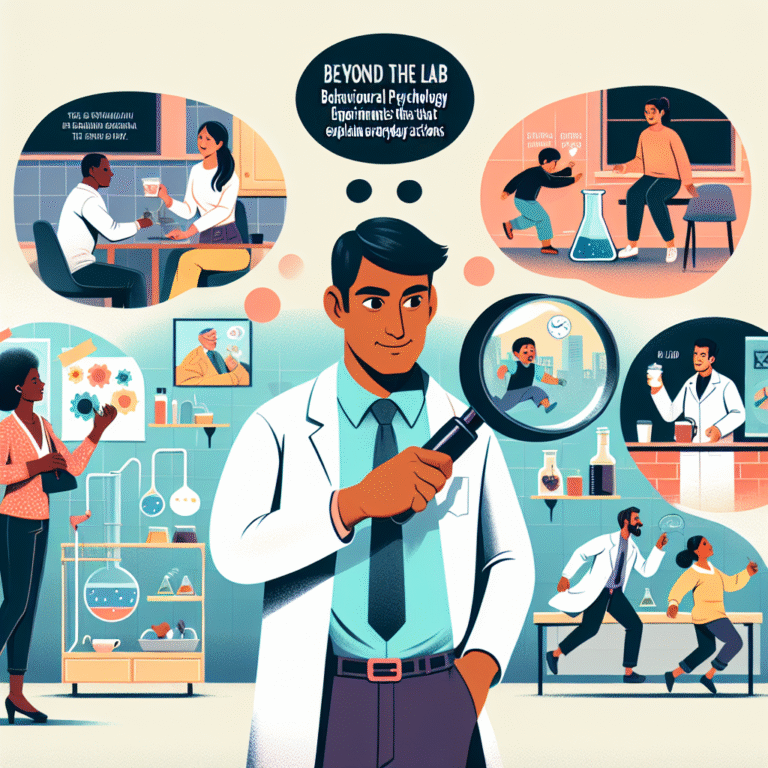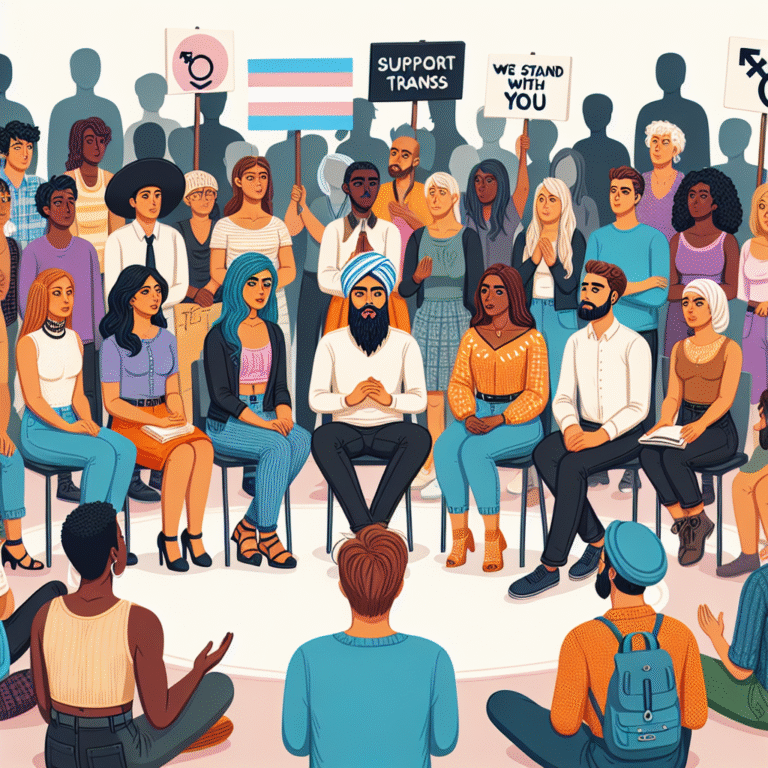
The Ultimate Guide to Behavior Modification and Its Impact on Educational Practices: A Psychological Perspective
Introduction
In today’s fast-paced educational environments, understanding how behavior influences learning is more crucial than ever. Behavior modification, a psychological technique that systematically alters behavior through reinforcement and punishment, has emerged as a game-changer in reshaping educational practices. But what does it truly mean to understand Behavior Modification and Its Impact on Educational Practices: A Psychological Perspective? By diving into this topic, we will uncover effective strategies, practical applications, and psychological insights that collectively enhance the educational landscape for both teachers and students.
As we explore this topic, consider the profound implications of behavior modification techniques in classrooms. Imagine a world where negative behaviors are minimized, and positive reinforcement creates an engaging learning environment. This journey through behavior modification not only highlights pressing educational needs but also illuminates transformative practices rooted in psychological theory.
What Is Behavior Modification?
Behavior modification is a therapeutic approach aimed at changing specific behaviors using established principles of learning. At its core, behavior modification charts a pathway to understanding how environment, reinforcement, and consequences shape behaviors. Whether it’s seen in autism therapy, classroom management, or corporate training, the strategies derived from behavior modification are versatile and effective.
Key components of behavior modification include:
- Reinforcement: Positive reinforcements encourage desirable behaviors by providing rewarding stimuli.
- Punishment: Implemented to deter undesirable behaviors by introducing adverse stimuli.
- Extinction: The process of diminishing undesirable behavior by withholding reinforcement.
These principles can be effectively integrated within educational practices, offering strategies to foster desirable behaviors and enhance the learning environment.
Understanding the Psychological Basis
Theoretical Foundations
Behavior modification is deeply rooted in psychological theories, particularly behaviorism. This school of thought focuses on observable behaviors as opposed to internal states like emotions or thoughts. Pioneers such as B.F. Skinner and John Watson emphasized that behavior is shaped primarily through interactions with the environment. According to Skinner’s operant conditioning theory, behaviors followed by positive outcomes are likely to be repeated, which provides a fundamental framework for educators looking to implement behavior modification techniques effectively.
The Role of Environment
The learning environment significantly influences behavior. Teachers who create structured, supportive, and stimulating environments can better promote positive behaviors in their classroom. Key elements include:
- Consistency: Regularly applying behavior modification principles ensures students understand expectations.
- Clarity of Expectations: Clearly defined rules enhance students’ understanding of acceptable behaviors and expected outcomes.
- Feedback Systems: Providing timely feedback helps students recognize and reinforce the connection between their actions and consequences.
Case Studies Illustrating Behavior Modification in Education
Case Study 1: Positive Behavior Intervention and Support (PBIS)
Overview: PBIS is a widespread framework that integrates behavior modification principles into educational practices. By focusing on promoting positive behavior, it supports students while minimizing disruptions.
Findings: Schools implementing PBIS report significant reductions in disciplinary actions and enhanced academic performance.
Relevance Analysis
This case study highlights how proactive behavior modification strategies can foster a conducive learning environment, ultimately leading to an increase in overall student engagement and success.
Case Study 2: Functional Behavioral Assessment (FBA)
Overview: FBA examines the reasons behind specific behaviors, allowing educators to tailor interventions based on individual student needs.
Findings: Teachers who utilized FBA saw improved behavioral outcomes tailored to each student’s unique context, leading to greater classroom harmony.
Relevance Analysis
FBA exemplifies how behavior modification can be personalized, addressing the specific challenges some students face while reinforcing positive behavior in an inclusive manner.
Case Study 3: Classroom Token Economy
Overview: A token economy system uses tangible rewards (tokens) for positive student behaviors, which can be traded for privileges or items.
Findings: Studies demonstrated that environments utilizing token economies experienced increases in student motivation and participation.
Relevance Analysis
This approach showcases the efficacy of immediate reinforcement to modify classroom behavior, enhancing the overall educational experience.
Practical Strategies for Educators
Implementing Positive Reinforcement
To effectively modify behavior, educators should focus on implementing positive reinforcement techniques. Here are some actionable strategies:
- Identify Desired Behaviors: Clearly outline what positive behaviors should be reinforced.
- Develop a Reward System: Create incentives that motivate students to exhibit desired behaviors regularly.
- Provide Immediate Feedback: Reinforce good behaviors right after they occur for greater impact.
Utilizing Consequences Wisely
Incorporating negative consequences should be treated with care. Here are some guidelines for educators:
- Ensure Fairness: Consequences should be proportionate and respectful, maintaining dignity for students.
- Teach Replacement Behaviors: Instead of solely imposing punishment, guide students towards appropriate behaviors.
- Engage in Reflective Conversations: Encourage discussions about behaviors and consequences to foster understanding.
Continuous Professional Development
Teachers should engage in ongoing training regarding behavior modification techniques. Best practices include:
- Workshops and Seminars: Attend events focused on behavior analysis and classroom management strategies.
- Peer Coaching: Collaborate with colleagues to share experiences and techniques.
- Online Courses: Leverage digital resources for flexible, continued education.
Impacts on Educational Practices
Enhanced Student Engagement
One of the most profound impacts of behavior modification is the enhancement of student engagement. By reinforcing positive behavior, students feel valued and are more likely to participate actively in their learning experiences.
Improved Classroom Management
Behavior modification strategies provide educators with tools to manage classroom dynamics effectively. A well-structured behavioral system can significantly reduce disruptions and create a more focused learning environment.
Greater Academic Achievement
Students who achieve consistent positive reinforcement tend to showcase increased motivation and performance. By addressing behavioral issues constructively, educators can channel energy towards academic success.
Conclusion
The insights into Behavior Modification and Its Impact on Educational Practices: A Psychological Perspective illustrate the immense potential these strategies hold in transforming educational landscapes. By understanding and applying behavior modification principles in classrooms, educators can create nurturing, effective, and engaging learning environments that support both teachers and students.
As we move forward, let’s embrace the proactive approaches that behavior modification offers and commit ourselves to enhancing educational practices. By fostering positive behaviors, we ensure that every student can thrive academically and personally.
FAQs
1. What is behavior modification in education?
Behavior modification in education refers to techniques used to alter students’ behaviors through reinforcement and consequences, aiming to create a more effective learning environment.
2. How can teachers implement behavior modification strategies?
Teachers can implement behavior modification strategies by focusing on positive reinforcement, setting clear behavioral expectations, and using consistent feedback systems.
3. What are some examples of behavior modification techniques?
Examples include positive reinforcement systems (like token economies), functional behavioral assessments, and the implementation of Positive Behavior Intervention and Support (PBIS).
4. Does behavior modification improve student engagement?
Yes, behavior modification can significantly enhance student engagement by reinforcing positive behaviors and providing incentives that motivate students.
5. Can behavior modification work for all students?
While behavior modification is highly effective, its success may vary depending on individual student needs. Tailoring interventions through methods like Functional Behavioral Assessment can optimize outcomes for diverse learners.
By embracing these evidence-based practices and insights into Behavior Modification and Its Impact on Educational Practices: A Psychological Perspective, educators can build a brighter future for their students and themselves, creating a legacy of positive change in education.

















